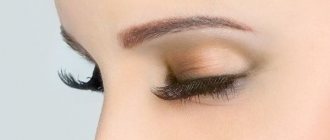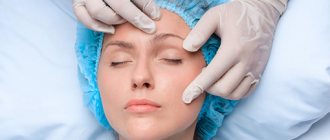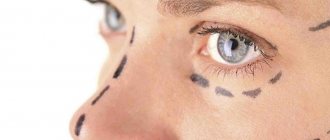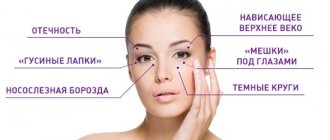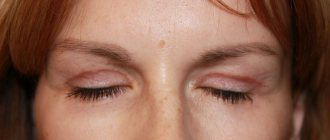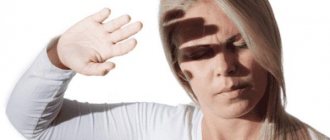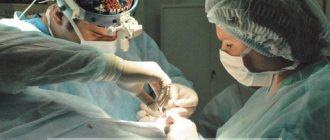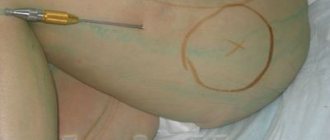How to get flawlessly youthful eyes for 10 years or more
You are probably considering blepharoplasty. Choose a surgeon and clinic.
You've probably already read that eye rejuvenation usually involves removing excess skin in the upper and lower eyelids, as well as fatty hernias that give the effect of bags under the eyes.
You have already been promised that a youthful look will delight you for 7-10 years...
Unfortunately, this is false information.
Firstly , in a smoking and nervous metropolis, the result of classical eyelid surgery lasts no more than 5.
Secondly , few people know that the technique of performing classical blepharoplasty was finally formed by 1950 and has undergone virtually no changes since then!
What determines the number of bruises
How long bruises last after blepharoplasty varies from patient to patient. This depends on several factors:
- The age of the person. Everything is logical here - the older the patient, the more time it will take for rehabilitation. This is explained by a slowdown in the tissue regeneration process.
- Skin type. Patients with thin epithelium with small capillaries will have more pronounced swelling and cyanosis of the face. But such phenomena will pass much faster, thanks to good blood circulation.
- The volume of the operation performed. Depending on the amount of tissue covered during exposure, one or another number of bruises will form. The more tissue is treated, the more noticeable the bruising.
- A type of blepharoplasty. An upper eyelid lift causes fewer bruises and allows the patient to return to a normal lifestyle sooner. Performing a lower eyelid lift provokes the occurrence of more bruises, and the duration of rehabilitation increases.
- Methods of performing blepharoplasty. Laser eyelid lift is the least traumatic; it eliminates the development of a large number of bruises and swelling.
- Skin infections. This happens extremely rarely, but can still lead to increased bruising on the face.
Also, swelling and bruising after blepharoplasty depend on the individual characteristics of the body (for example, fluid retention).
Often the reason for long-term persistence of bruises and swelling is associated with non-compliance with the recommendations of the plastic surgeon after eyelid surgery.
The trust of celebrity patients is one of the best proofs of the “couture” level of skill
Let’s not hide that Platinental surgeons trust their eyes to celebrities and politicians.
We are somehow accustomed to the fact that all stars undergo plastic surgery. But we rarely think that they are not only the most demanding patients. They are also the busiest. Their filming and touring schedule is planned 3-5 years in advance .
Due to lack of time and the nature of the profession, such patients always make 2 strict demands:
- the operation should take place without complications and have the shortest possible recovery period,
- the operation must provide a long-term result and be done as rarely as possible, because forced downtime can easily ruin a career.
And the stars of politics and business present one more thing.
They are not eager to make public the fact of the anti-aging procedures performed. Therefore, the operations that we perform at Platinental provide the most natural result without the effect of an operated face. Everything looks as if the person began to lead a healthy lifestyle and gets enough sleep regularly .
We are pleased to offer all these technologies to you.
Iskornev Andrey, plastic surgeon.
Eyes are the main factor of attractiveness. They determine how sociable you are, what mood you are in, what mood you are in, whether you are flirtatious or strict, analytical or, conversely, prone to adventurism.
The harmony of the eyes, like all facial features, has its own rules, but the degree of “deviation” from the conventional norm can be much greater than with the shape of the lips, nose or chin.
Despite this, there are strict rules:
— The contour of the lower eyelid should touch the lower border of the iris, otherwise the eyes look round, “fishy”, this is how the eyelid of an elderly person looks. That is why lower eyelid blepharoplasty is a special science, and only a few surgeons are concerned about the stability of the eyelid shape after such an operation.
Regular and fisheye
— The outer corner of the eye should be 2-3mm higher than the inner one. This creates the effect of an almond-shaped eyelid, which on a woman’s face emphasizes the artistry and sexuality of nature.
Regular and almond-shaped eyes
- There should be a small roll of muscle under the lower eyelid (pretarsal roll of the lower eyelid). This should definitely be taken into account when planning lower eyelid blepharoplasty. The surgeon must be able to model this roll of muscle to highlight the youthful shape of the eyelid and the natural result of rejuvenation.”
The pretarsal ridge of the lower eyelid on Kate Middleton, Emma Watts and the model from the Christian Dior show certainly speaks of their youth.
Seamless blepharoplasty of the upper eyelids
Typically, to perform a classic upper eyelid blepharoplasty, the surgeon makes an incision in the natural crease of the upper eyelid and carefully removes excess skin.
The art of the surgeon in this case:
- remove as much as needed. No more and no less
- make the seam as invisible as possible and hide it exactly in a natural fold.
And only a few know that in 3 out of 4 cases, an incision on the eyelid can be omitted . Especially in young patients.
Injection removal of bags under the eyes with Eyebag Solution.
Often the cause of excess skin on the upper eyelids is drooping eyebrows. Classic blepharoplasty in this case can greatly aggravate the ptosis and sharply outline the contours of the eye sockets.
Therefore, at Platinental we offer endoscopic brow lift as an alternative to blepharoplasty. It simultaneously allows you to 1) “open your eyes”, 2) remove the overhang of the skin fold of the upper eyelid and 3) model the shape of the eyebrows.
To obtain an even more pronounced and long-lasting result, eyebrow lifting and correction is performed using absorbable implants - endotins.
This three-in-one approach allows you to avoid 100% stitches on the eyes and provides a much more pronounced and long-lasting result.
The effect of the procedure is impressive. See for yourself:
Surgery to remove eyelid inversion
There are two ways to eliminate the complication: surgical and conservative. The first option involves the use of gymnastics and massage, which stimulate the growth of the tone of the circular muscle. Surgical methods are prescribed depending on the patient’s age, type of defect, and condition of facial tissues. The doctor needs to know the following information:
- the presence of scars or other damage to the skin;
- the cause of ectropion;
- condition of soft tissues in the eye area;
- How weakened are the ligaments that hold the corners of the eye in the desired state?
The task of surgery is to transport the musculoskeletal structure of the eyelid to the desired position and fix it there. This procedure can only be performed by a qualified plastic surgeon or ophthalmologist in a special department. The initial stage of the manipulation is a meeting with the surgeon, who prescribes the necessary tests for the patient. Among them:
- fluorography;
- general blood and urine analysis;
- blood biochemistry;
- electrocardiogram;
- blood for platelets
If there are pathologies, or depending on the general condition and age, the doctor may prescribe additional tests or a consultation with a related specialist.
The duration of the operation is 1-3 hours, depending on the degree of complexity and the chosen method.
In addition to eliminating ectropion and normalizing the natural process of tear secretion, you can get rid of hernial protrusion in the eyelid area, lift the upper corners of the eyes, and remove excess skin. All these nuances of the operation should be discussed during a consultation with a doctor.
Incisions during surgery, as with blepharoplasty, will be made in the natural folds of the eyelids and stitched together in a special cosmetic way, which will help avoid the formation of scars.
Immediately after the operation, the patient will need to stay in a hospital for 24 hours, under the supervision of a doctor. And after discharge, it is worth visiting a doctor for a consultation, only he will be able to control the correct tightening of the tissues and evaluate the result of the correction. For two weeks after the procedure, swelling may remain on the face. They will be most pronounced in the first few hours after the manipulation.
To alleviate the condition, the doctor may prescribe cold compresses and physical procedures. This will speed up the process of resorption of swelling and tissue regeneration.
Lower eyelid blepharoplasty
During classic blepharoplasty, the surgeon makes an incision under the eyelash line. Its task is to eliminate excess skin and remove hernias, which create the effect of puffy eyes.
If there is no excess skin, a minimally invasive operation is performed to remove the bags - the so-called transconjunctival blepharoplasty without external incisions. An incision is made on the inside of the eye, through which the fat sac will be removed. The advantage of transconjunctival blepharoplasty is the absence of a visible scar on the face after healing.
Lower eyelid blepharoplasty at Platinental is performed differently. As a rule, simultaneously with a low-traumatic cheek lift. This technique is called Cheek lift light.
Circumferential blepharoplasty and endoscopic midface lift. Done by Andrey Iskornev.
Cheek lift techniques are varied.
- you can fill the area of the cheekbones and mid-face with your own fat (do lipofilling),
- You can lift the overhanging area of the cheekbone with the absorbable Endotine device. Endotins in plastic surgery are also called biological face lifting, since endotin is absorbed 5-6 months after injection, but the tissue continues to be stretched.
In this case, no additional incisions are required - the entire procedure is carried out through an incision in the eyelash edge.
No other eye blepharoplasty gives such a result! Just imagine. Your new face without nasolacrimal grooves, the protruding contours of the eye sockets (the transition between the lower eyelid and cheek) are smoothed, the nasolabial folds magically disappear, the cheekbones return to the top and are filled with youthful volume. Your face glows with youth!
LOWER AND UPPER BLEPHAROPLASTY
After preliminary infiltration of the tissues of the upper eyelid with a saline solution with the addition of an anesthetic (such as ultracaine, lindocaine, etc. for pain relief) and adrenaline (to reduce bleeding), incisions are made along the marking lines with a scalpel - very accurately and thinly, without damaging the surrounding tissue. Then, using sharp scissors, excess skin of the eyelid is excised within the markings.
Rice. 5,6,7. Removal of fat bags on the upper eyelid (left), intradermal suturing of the surgical wound (center) and view after upper blepharoplasty and incision on the lower eyelid (right)
There are two packets of fatty hernias on the upper eyelid: one is located in the center of the upper eyelid, the second is in the area of the inner corner of the eye. During upper blepharoplasty, hernias are sequentially isolated, excised, and their base is coagulated to prevent relapses. If necessary (severe sprain and weakness), a thin strip of the orbicularis oculi muscle is removed. A 6/0 non-absorbable prolene suture is then placed intradermally. Immediately after this, infiltration of the soft tissues of the lower eyelid is performed and a scalpel incision is made along the marking line.
Rice. 8.9. View of fatty hernias of the lower eyelid (left) and removal of fatty bags of the lower eyelid (right)
UPPER BLEPHAROPLASTY REVIEWS
“At the plastic surgery clinic, Abrielle performed several operations at one time with Kochneva Ilona Sergeevna: abdominoplasty, liposuction, breast lipofilling and upper blepharoplasty.
Amazing specialists. The seam is simply excellent, neat. Ilona Sergeevna – master, jeweler. The entire staff is incredibly kind and helpful. They feed you homemade, delicious food”/ Irina, 27 Other reviews of blepharoplasty at the Abrielle aesthetic surgery clinic.
Laser blepharoplasty: young eyes should look wrinkle-free!
Contrary to popular myths, it is impossible to eliminate crow's feet using classic blepharoplasty.
For radical eye rejuvenation, we at Platinental combine surgery with light fractional laser eyelid peeling. Carbon dioxide laser allows you to make the skin more elastic after surgery, erase the relief of fine wrinkles and improve its color, especially for those who suffer from dark circles under the eyes.
Resurfacing is performed in the clinic simultaneously with the operation under TIVA anesthesia, so pain is excluded.
Photos "before and after"
Circular blepharoplasty. One of the indicators of successful blepharoplasty is the stability of the lower eyelid. Changing the curvature of the line even by 1 mm gives the effect of “operated” eyelids. The result “before” and 9 days “after” the operation. Subsequently, the seam will almost completely turn white and disappear. Surgeon: Iskornev Andrey.
The photo on the left shows a patient with rounded eyelids after previously performed blepharoplasty. The photo on the right shows the corrected shape due to canthoplasty and lipofilling of the infraorbital areas. Performed by surgeon: Andrey Iskornev.
SMAS lift, upper and lower blepharoplasty, forehead lift, Hollywood neck lift, CO2 laser resurfacing. Surgeon: Iskornev A.A.
Marina Glushenkova underwent upper and lower transconjunctival blepharoplasty. The result is relief from drooping upper eyelids and bags under the eyes. Surgeon: Iskornev Andrey.
Photo from the patient’s personal archive. Completed by: Andrey Iskornev.
Elena Savitskaya “before” and 6 months “after” blepharoplasty. Surgeon: Iskornev A.A.
Review by Elena Savitskaya
SMAS face and neck lift, blepharoplasty of the upper and lower eyelids. Surgeon: Iskornev Andrey.
Done by Andrey Iskornev.
Done by Melnikov D.V.
Blepharoplasty of the lower eyelids, Cheek lift (cheek lifting) using the Endotine Midface ST fixator. Done by Andrey Iskornev.
Blepharoplasty of the upper and lower eyelids, cheek lift light. Surgeon: Iskornev Andrey.
Bags or dark circles under the eyes occur not only due to pathology. Sometimes, after a party or drinking a lot of liquid at night, bags can appear in healthy people. These are fatty hernias of the lower eyelids.
Transconjunctival blepharoplasty can help get rid of dark circles or bags under the eyes. Excess fat hernias are removed without visible incisions. As a result, the bags will disappear, and dark circles will not appear even after the New Year holidays.
Completed by: Vasiliev Maxim.
The administrator is the face of the clinic! Blepharoplasty of the upper and lower eyelids, SMAS lifting of the lower third of the face. Plastic surgeon: Iskornev A.A.
How do stitches heal after blepharoplasty and how to make them invisible?
There is an opinion that eyelid surgery is one of the simplest aesthetic operations. Believing in this myth, patients often turn to clinics with a dubious reputation and to surgeons who do not have sufficient experience. The price of frivolity in this case can be very high.
Blepharoplasty is always accompanied by skin incisions, the application and removal of sutures, and the subsequent formation of small scars. It is difficult to hide them completely, and any mistake by the surgeon will be clearly visible, since all the work is carried out on open areas of the face. Where exactly will the scars remain, how do they form and how to care for them so that the result of plastic surgery pleases and not upsets? What can be done to ensure that there are no visible traces of the operation left at all? TecRussia.ru and our permanent expert, Ph.D. Ekaterina Sergeevna Kudinova examines these questions in detail:
↑ Where are the seams located?
Depending on the type of operation, the incisions are made as follows:
- Upper blepharoplasty – along the natural crease of the eyelid, sometimes a little further towards the temple. During the intervention, overhanging skin is excised.
- The lower one is parallel to the fold located under the eye (along the inside of the eyelid or under the eyelashes). Here the surgeon removes not only excess dermis, but also fatty hernias.
- Canthoplasty – along the fold of the upper eyelid, also affecting the epicanthus. This operation is performed to change the shape of the eyes, most often in people with an Asian type of appearance.
- Canthopexy – along the edge of the lower eyelashes. It is carried out to tighten the skin in this area, in some cases accompanied by excision of excess.
Transconjunctival or, as it is also called, sutureless blepharoplasty deserves special attention. The main difference of this technique is that all incisions are made along the inner surface of the eyelid (conjunctiva) and will not be visible from the outside. The mucous membrane here has an increased ability to regenerate, so sutures are also not required. In addition, the tissues themselves are minimally injured, resulting in a shorter rehabilitation period and a reduced likelihood of complications. But the potential of this operation is limited: with its help you can only get rid of excess fatty tissue and “bags” under the eyes - if you also need a lift, then you cannot do without external approaches. As a rule, transconjunctival plastic surgery is performed at a relatively young age, since in the presence of pronounced wrinkles and excess skin it is no longer advisable.
There are also completely non-invasive methods of eyelid correction, when no incisions are made at all. These are various options for hardware lifting: laser, ultrasound, thermolifting, etc. Naturally, there are no scars or other traces left after such interventions, but the result, alas, is incomparably worse than with a full-fledged plastic surgery.
↑ When are stitches removed?
The standard period followed by a significant part of surgeons is 4-6 days after blepharoplasty. As a rule, by this moment the edges of the wounds have already grown together quite confidently and there is no need to fear their divergence. However, this option has a significant disadvantage: when it is used in the future, a pronounced scar often forms on the eyelids. The reason is the prolonged tension of the tissues held together by the threads. In addition, the risk of developing an inflammatory process increases, the healing period is delayed, and marks may remain on the skin not only from the incision, but also from the suture material itself.
This problem can be avoided if the stitches are removed the very next day after surgery. Next, the threads are replaced with special glues that securely fasten the edges of the wound, but do not create excessive pressure on the injured tissue. After 2 weeks, the adhesives are also removed - as a result, where the surgical approach took place, a thin, neat scar is formed, which at first has a pinkish tint, and then gradually fades and becomes almost invisible.
↑ How long does it take for stitches to heal?
As with any other post-operative wound, blepharoplasty incisions undergo scarring in four stages:
- Exudative (inflammatory) - its duration does not exceed 1 week, and is accompanied by redness and swelling of the eyelids. This is a normal phenomenon caused by the body's reaction to traumatic effects. To avoid complications, you must carefully care for the suture and follow all the surgeon’s instructions. Any kind of stress is excluded, since even slight tension can provoke bleeding and divergence of the edges of the wound.
- Granulation - the incision site begins to fill with connective tissue. At first, its layer is fine-grained, cloudy, and bleeds easily. But gradually it thickens and closes securely, forming a bright pink scar. This stage lasts up to 4–5 weeks.
- Epithelization (scar formation) occurs approximately from the second month. The wound area becomes dry and hardens. The number of blood vessels in the scar area gradually decreases, causing it to noticeably fade.
- Final ripening takes six months to a year, sometimes a little more. During this time, the scar becomes more and more comparable to the skin in relief and color. During eyelid surgery, the incisions are relatively small, and if healing proceeded without complications, at this stage they can become almost invisible - they can only be found with a very careful examination of the skin folds.
The appearance of the scar will depend most on:
- experience and skill of the surgeon who performed blepharoplasty;
- characteristics of the patient’s body;
- following the doctor’s recommendations in the postoperative period.
| Important: competent “cutting” of the tissues of the eyelid is of great importance. Sometimes surgeons make very short incisions that are limited by the width of the palpebral fissure. However, in the postoperative period, the scar always shrinks, and this approach is fraught with the appearance of a very unsightly “fish-eye” effect - the so-called violation of the proportions of the palpebral fissure, due to which it takes on an unnaturally round shape. The correct technique involves making longer incisions protruding towards the temple - at first they look less aesthetically pleasing and are better visible from the outside, but in the long run this is the only way to ensure a perfectly correct shape of the gap, without any traces of the operation. |
Not earlier than after 4-5 months (sometimes up to 10-12) the scar finally takes its rightful place. In the future, it will become even paler and thinner, and after six months or a year it should completely descend into the crease of the eyelid.
↑ How to speed up healing and improve the appearance of scars?
The postoperative wound behaves differently for each patient. But the basic care recommendations will be the same for everyone:
- In the first few days, it is strictly forbidden to touch the incisions - massage them, rub them, comb them, etc. You can wash your face only a day after blepharoplasty, and only with cold water, without touching the seams.
- During the first month, it is extremely undesirable to bend over - this contributes to strong stretching of the tissues and can lead to divergence of the edges of the wound.
- Lifting weights and playing sports at full strength is possible only after 3 months; moderate physical activity is allowed after 3-4 weeks.
- It is extremely important to limit exposure to ultraviolet radiation. Sun rays adversely affect the healing process by stimulating excessive collagen production. As a result, the scar becomes convex and acquires a dark tint, which makes it more noticeable in appearance. Therefore, for 2-3 months after blepharoplasty, you should go out into the open sun as little as possible, and wear glasses with dark lenses outside. The ban also applies to visiting the solarium.
- In addition, within 1 month it is necessary to avoid baths, saunas and other thermal procedures - they all contribute to excessive swelling.
After removing the sutures, the eyelids must be treated with an antiseptic and agents that accelerate healing and help increase the elasticity of the dermis. To ensure optimal conditions for scar formation, it can be smeared with silicone-based products (which have proven effectiveness) or others prescribed by the surgeon. Additional efforts may be needed if there is a risk of hypertrophic or keloid scar formation. Excessive growth of connective tissue is prevented by silicone patches (Mepiform, Dermatix), injections of glucocorticosteroids - Diprospan, Dexamethasone, as well as physiotherapy with absorbable drugs (Fermenkol, Lidaza, etc.)
If a year or more after the operation you are still not satisfied with the appearance of the scar, hardware peelings will help make it less noticeable, most often a laser is used for these purposes. In the case of rough, pronounced scars, their surgical excision may be indicated, but with blepharoplasty with its very small incisions, such a situation is practically excluded.
↑ What could go wrong?
Normally, sutures after surgical correction of the eyelids heal quickly and almost without a trace. Several reasons can disrupt this process:
- Insufficient qualifications of the surgeon and associated errors - excision of excessive tissue, muscle damage, violation of antiseptic rules and infection, etc.
- Failure of the patient to comply with medical recommendations for preparation for surgery. Taking anticoagulants and the abuse of bad habits complicate the process of subsequent regeneration and can lead to bleeding and inflammation, as a result of which the scar often forms larger and denser.
- Poor seam care. Even if the operation was successful, irregular wound treatment and refusal to use healing ointments increase the risk of severe scarring. Also, it is extremely undesirable to violate the regime during the recovery period, for example, early resumption of sports training.
One of the most unpleasant complications for the patient is suture dehiscence. This usually happens in the first days after correction. The most common reasons are poor-quality threads, their incorrect application, poor fixation, as well as incorrect actions of the patient - sudden movements, bending, attempts to rub the eyes, etc. The danger here is not only in additional injury to the eyelids, but also in the fact that even minimal opening of the edges of the wound can provoke an inflammatory process and greatly prolong the rehabilitation period. Therefore, at the slightest violation of the integrity of the sutures, it is important to immediately consult a doctor who will re-apply them.
Some common consequences of blepharoplasty are normal, are not considered a cause for concern and do not require additional treatment:
- Consolidation of the seam or the area around it is an inevitable accompaniment of tissue scarring. Temporary phenomenon. Sometimes, to speed up their resorption, the use of injectable hormonal drugs is allowed, but in most cases there is no such need.
- A sensation that is usually described as “pulling at the stitches” - the first few days this occurs due to the natural tension of the skin. If discomfort persists longer, you should notify your doctor.
- Itching in the scar area - a healing wound always itches, this indicates active regeneration. The main thing is to restrain yourself and under no circumstances put your hands or foreign objects into the incision area, otherwise there is a high probability of infection and further inflammation. Cold compresses and ointments with soothing properties can help relieve discomfort.
There are also more serious situations. Particular attention should be paid if, after blepharoplasty, the suture area:
- Inflamed - a similar complication occurs at different stages of healing as a result of the introduction of bacterial microflora. Symptoms of the pathological process: redness at the incision site, swelling, tissue tension, local pain. Sometimes accompanied by whitish or yellowish discharge. At the first such signs, it is recommended to thoroughly treat the wound with an antiseptic, then apply a healing ointment (Levomekol, Solcoseryl). An actively developing inflammatory process is a reason to urgently consult a doctor.
- Bleeding - the reason may be poor handling of the sutures, their divergence due to stress, or disruption of the healing process. The patient himself can provoke such a complication if he inadvertently removes the scab from the wound. Accidental bleeding is not difficult to stop: just disinfect the area (Miramistin, hydrogen peroxide) and then adhere to the strictest hygiene to avoid infection. If you bleed regularly or have a pronounced subcutaneous hematoma, you should immediately visit a doctor.
- It festers - any discharge from a developing scar should alert you, but purulent-necrotic contents coming out are a cause for particular concern. The cause may be remnants of suture material in the tissue, penetration of pathogenic bacteria, or improper wound treatment. In any case, an examination by a surgeon is required to make an accurate diagnosis and further treatment.
Postoperative period
- Sutures are removed on days 2–6 after surgery.
- Day 7 – You can go to work.
- Bruising and swelling after blepharoplasty can last up to 10 days.
- During the first week, it is recommended to limit sports and dancing, sexual contacts, and refrain from cleaning, reading and watching television.
- Starting from day 8, you can use hypoallergenic decorative cosmetics.
- 14 days – it is forbidden to sunbathe in the sun or in a solarium.
- 21 days – it is not recommended to use contact lenses.
- 30 days - avoid hot showers, saunas, baths and swimming pools.
- For 3 months after surgery, you need to use sunglasses to protect from ultraviolet radiation.
REHABILITATION PERIOD AFTER UPPER AND LOWER BLEPHAROPLASTY
The postoperative period does not require a hospital stay: patients are under the supervision of a surgeon in the outpatient ward for 2 hours and then return home. The stitches must be removed on day 5, after which you can immediately apply decorative cosmetics. You will be able to return to work in a week. The result of plastic surgery can be assessed within two weeks - after minor swelling and bruising have gone away. Both after upper eyelid surgery and lower blepharoplasty, you cannot visit the sauna, solarium, sunbathe or play sports for 3 months. And most importantly: the effect after both lower and upper blepharoplasty lasts for decades.
Seams
Scars after blepharoplasty are no thicker than a “cat scratch” and are located strictly in natural folds.
Complete absence of scars after upper blepharoplasty 3 weeks after surgery. Surgeon - Vasiliev Maxim.
For additional resorption, fractional laser resurfacing of the skin of the upper and lower eyelids is performed 1 month after surgery. As a result, the seam will not be visible even to the most experienced “best friends” without makeup.
